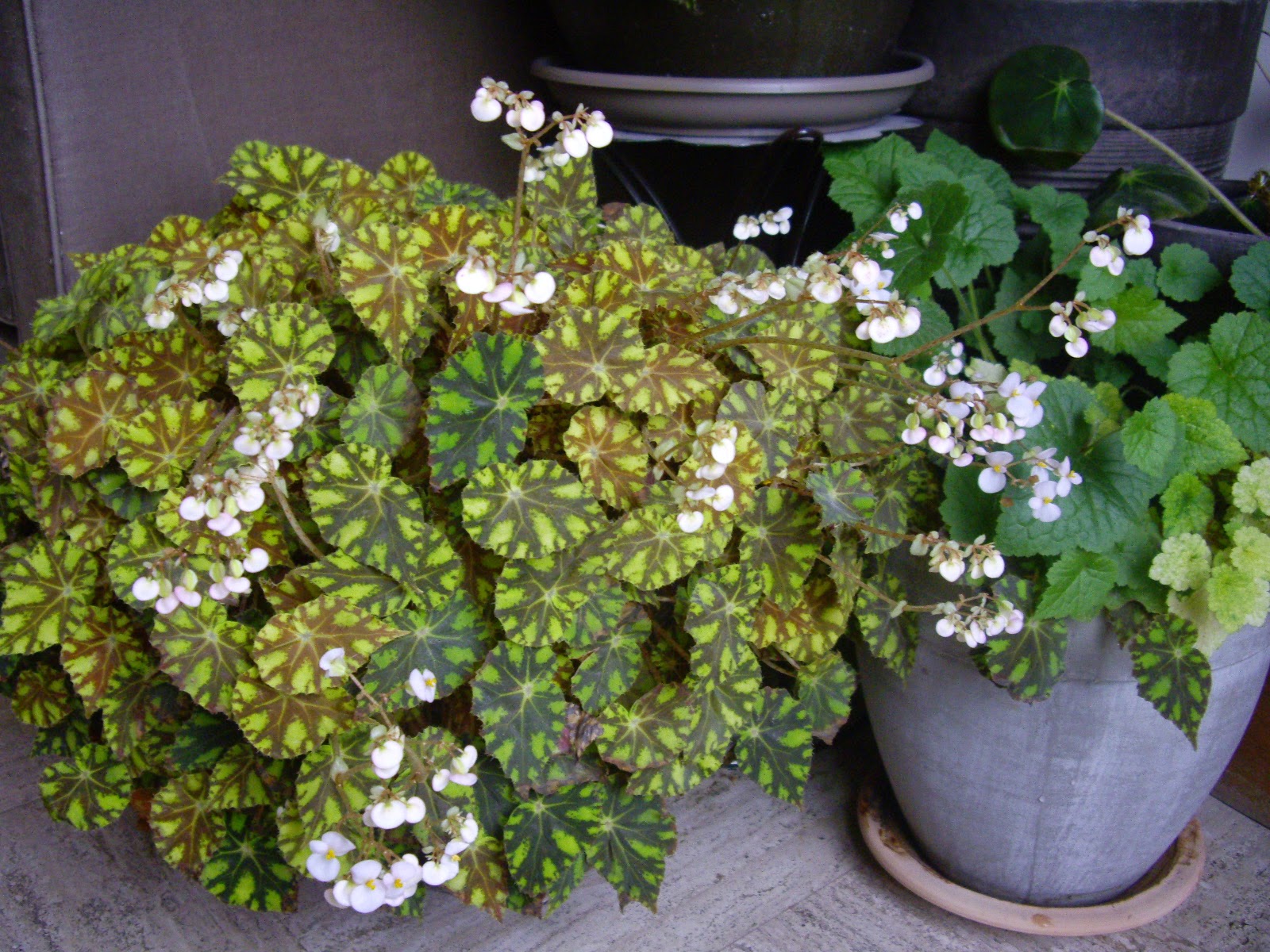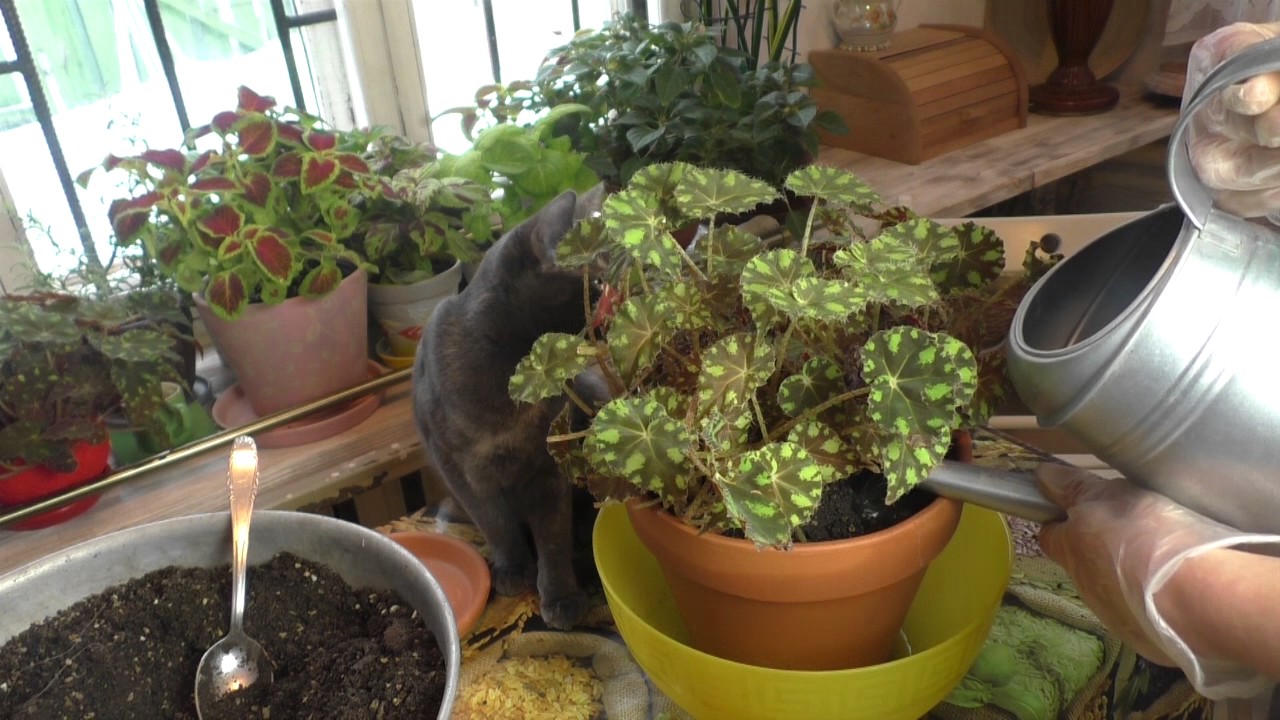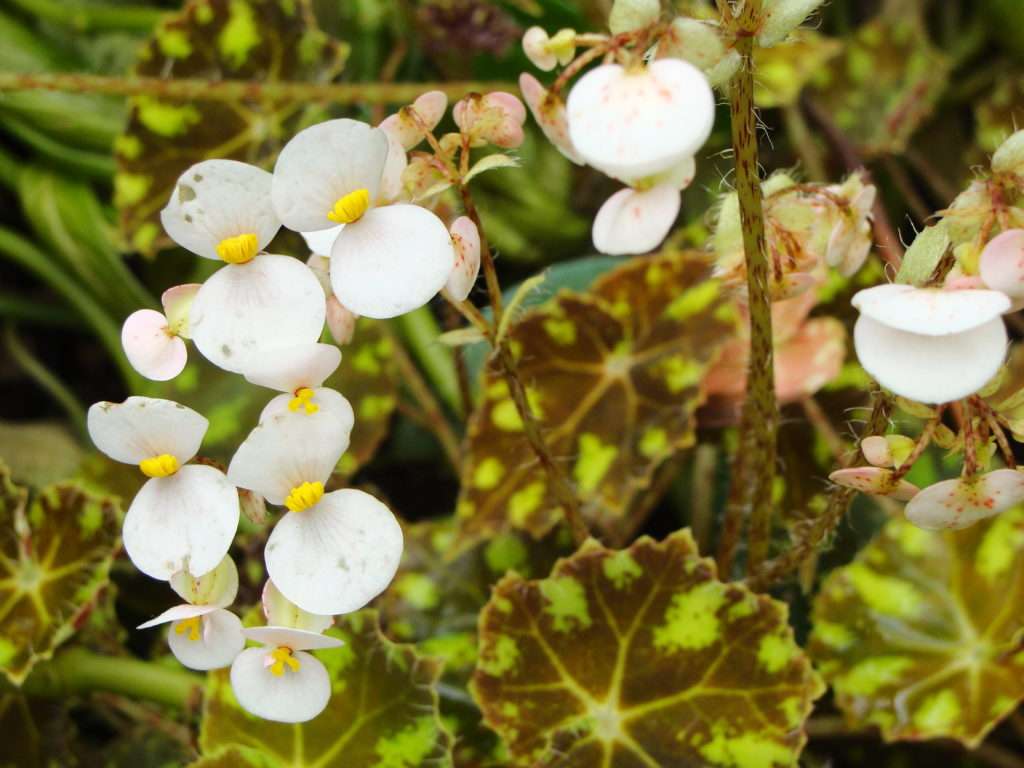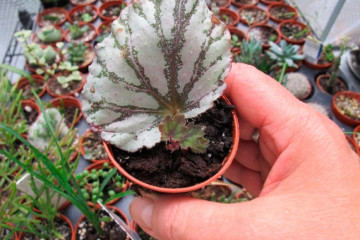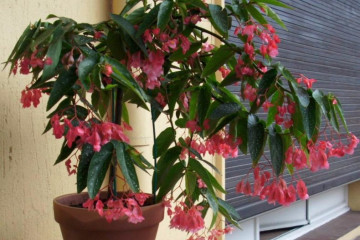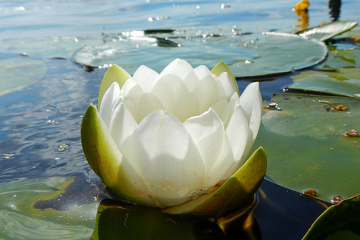Tiger begonia flower (Begonia Bowerae, Bauer's begonia)
Content:
The mottled, contrasting pattern on the leaves of Begonia Tiger gave the name to this ornamental deciduous plant by its similarity to the color of the tiger. The color of the plant's leaf plates ranges from light green to dark brown.
General description of the tiger begonia plant: name, external signs
Tiger begonia is an indoor perennial. It is a small, leafy bush. Its height is 25-30 cm. The leaf plates are small, about 4 cm wide. In some varieties, the size of the leaves is much larger. They cover the stems. The shape of the leaves is ovoid or round, sometimes more complex, similar to oak leaf plates.
Small white tiger begonia flowers. Outwardly, they are similar to the wings of butterflies. On the bush, the flowers are hardly noticeable. All attention is drawn to the bright color of the foliage. The plant rarely blooms.
Tiger begonia is an artificially bred hybrid that appeared in the 1970s. The second name of the flower is Bauer's begonia (Begonia Bowerae). It is named after the breeder R. Bauer who created it. Country of origin - Germany.
How to provide proper care at home
The golden rule of caring for tiger begonia at home is to take into account the conditions that are characteristic of the natural growing environment at home, and recreate them at home.
Soil selection and feeding
The soil for tiger begonia is made up of equal parts:
- peat;
- humus;
- perlite;
- sand.
The plant is regularly fed to compensate for the lack of nutrients in the indoor soil. So that begonia does not suffer from a shortage of certain useful substances, complex compositions for decorative deciduous plants are applied as fertilizers. They are used no more than once every 3-4 weeks. And the concentration is made half as much as indicated in the instructions for the finished composition.
If you transplant the flower regularly, completely changing the soil in the pot, the frequency of fertilizing can be reduced or completely abandoned. Transplants are planned once a year as the root system grows and fills the pot completely. Signs that it's time to replant begonia: pallor of leaves, loss of bright, contrasting color.
Rules for watering and maintaining humidity
When choosing a watering regime for tiger begonia, you should be aware of the properties of the plant and adhere to certain rules in order to avoid decay of the roots due to an excess of moisture:
- use settled water at room temperature;
- water at the root, without wetting the leaves, so that they do not get sunburn;
- adhere to the regularity of watering 3-4 times a week in the summer and 1-2 times a week in the winter;
- when watering, be guided by the state of the upper layer of the soil: if it is completely dry, the plant needs watering;
- periodically loosen the soil in the pot so that air flows freely to the roots;
- maintain high humidity in the room where Bauer's begonia is kept.
Temperature and lighting
To properly care for tiger begonia, you should create a comfortable temperature regime for it. It varies from 16 ° C to 22 ° C. Healthy, robust plants are able to withstand large fluctuations in temperature, but for short periods of time. The flower tolerates a higher temperature more easily than a cold one. When it gets colder, the roots of the plant begin to rot.
As an ornamental deciduous plant, Bauer's tiger begonia requires good lighting. Only with enough light does its leaf plates remain bright. But the lighting should be diffused. Due to direct rays on the leaves, burn spots may appear, their color fades.
The most suitable place for begonias in the house is the eastern, northern and northeastern window sills. On windows that face south and east, it is better not to place a flower in summer. It will suffer from heat and direct sunlight. But in the fall and winter, the choice of southern and eastern window sills can be beneficial. At this time, even intense lighting does not harm the plant.
How and under what conditions it blooms
Tiger begonia pleases with flowering only if good conditions are created for it during the dormant period. The plant does not like to "wake up" ahead of time.
If begonia does not want to bloom, you need to pay attention to the following factors:
- indoor air temperature;
- regularity of watering;
- illumination;
- air humidity.
If all the parameters for caring for Bauer's begonia are within normal limits, and it does not please with flowering, pay attention to the composition of the soil. It should be nutritious and loose. You can achieve the appearance of buds by changing the soil in the pot. The optimal composition is sheet soil, peat, sand and perlite.
Recommendations for breeding at home
Tiger begonia reproduces in several ways:
- cuttings;
- dividing the bush;
- seeds.
Florists most often resort to cuttings. This is the easiest and fastest way. For him, shoots, parts of stems and leaves are used. 3-4 leaves are left on the shoots, the rest are removed. The cuttings are planted in the ground, watered and kept in a dark place for several days.
Leaf cuttings are placed in water. After the roots appear, I transplant them into the soil, put them in a greenhouse so that the plant quickly takes root and grows well.
Regardless of which breeding method is used, experienced plant breeders advise observing the following conditions:
- take planting material from healthy plants;
- check that they are not damaged;
- add a weak solution of potassium permanganate to water or soil so that the roots do not rot.
Indoor perennial Bauer's begonia attracts attention with its extraordinary foliage color. It becomes an adornment of any windowsill, even without flowers. Its bright green leaves with brownish spots amaze with an unusual combination of colors, and the begonias themselves are neat.

